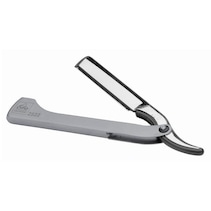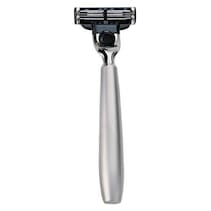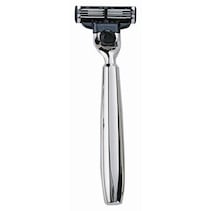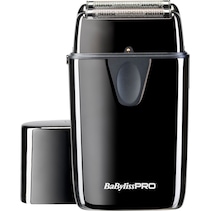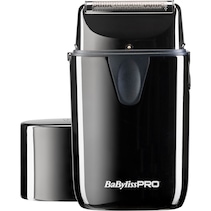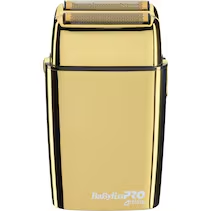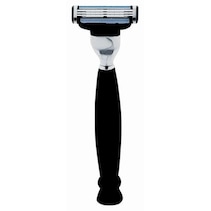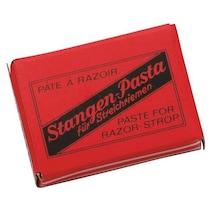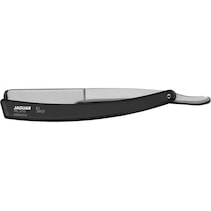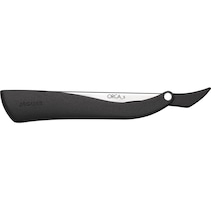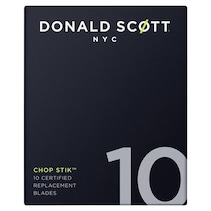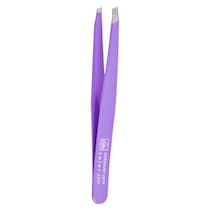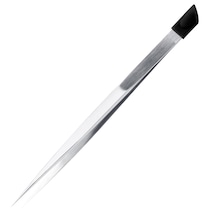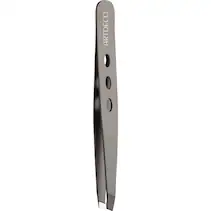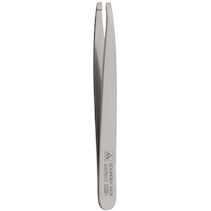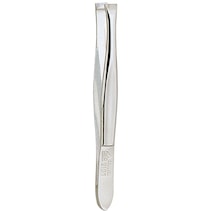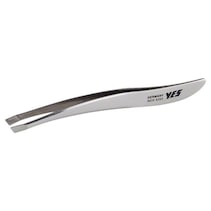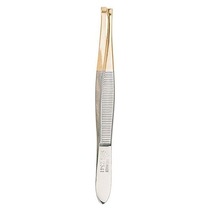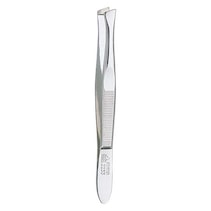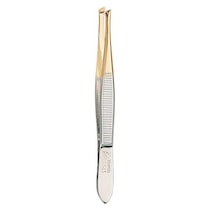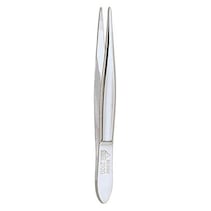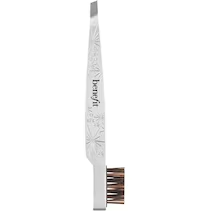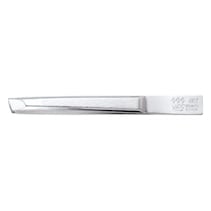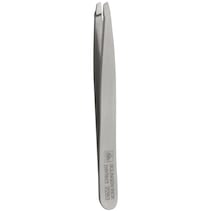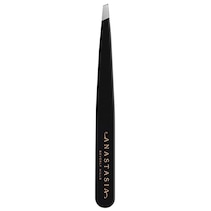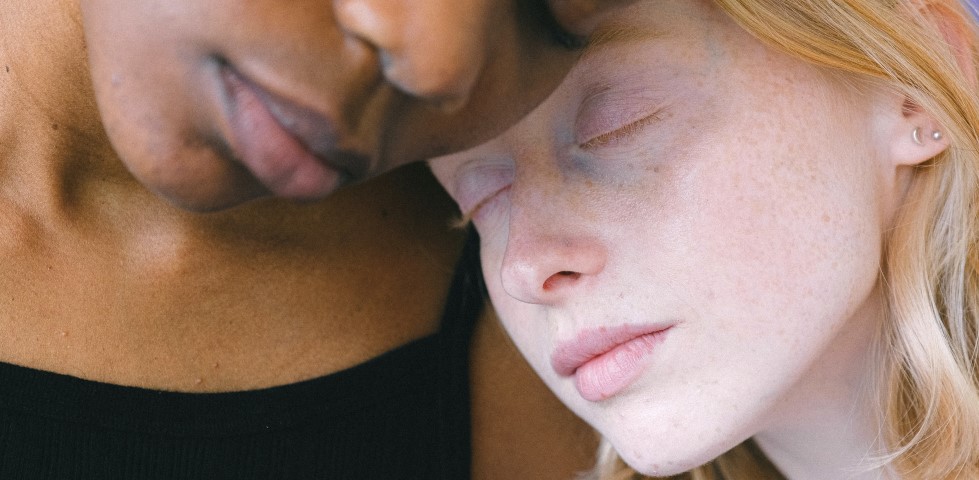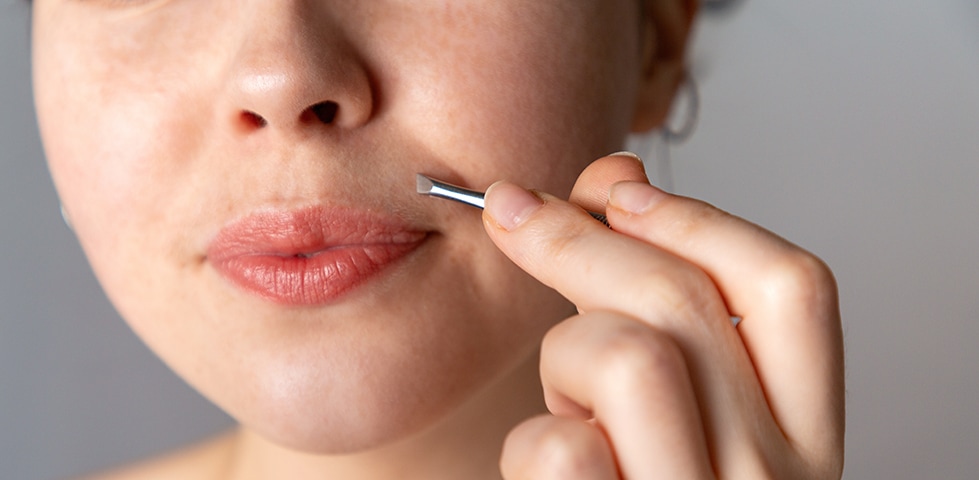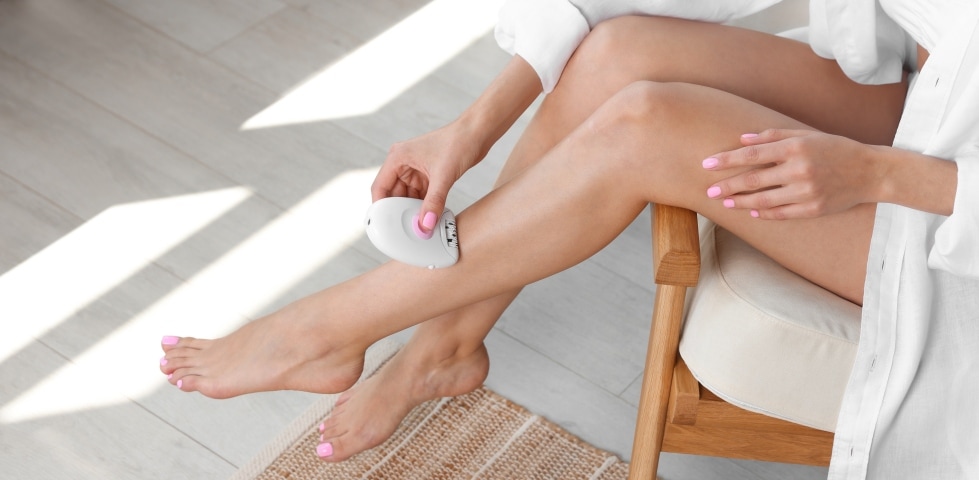
Removing facial hair – discover the best method for your skin
Facial hair removal is part of many people's daily routine. The fact is that everyone has hairs on their chin, on their upper lip, cheeps and forehead. And no one can influence how pronounced the hairs look: from light fuzz to thick, dark hairs – it varies from person to person. Even so, many people are not comfortable with the hair on the faces and want to remove it. In this guide, we present facial hair removal methods that you can perform effortlessly at home and talk about which professional treatments we recommend.
10 June 2024 • 5 min. reading time
Table of contents
Removing facial hair – why hairs even grow there in the first place
Hair played an important role in human development. Our ancestors roamed the wilderness as hunter-gatherers and were only scantily clad. The idea of removing their facial hair wouldn’t even have occurred to them. This is because facial hair and body hair served primarily to protect the skin from injuries.
These days, most of us don’t have to roam around in the wild to gather our vegetables. But as you can see: hair is something completely normal – even if we don’t technically need it any more thanks to our civilised way of life. Evolution is still playing catch-up. Facial hair still grows (often undesirably) regardless of genders, which is why its removal can become a regular but tiresome routine. But why does hair growth vary so much from individual to individual? There are different reasons for this:
- Genetics: how hairy someone is often runs in the family. No one can control their genetics.
- Hormonal changes: facial hair can grow more or less during puberty, pregnancy or the menopause. If you notice a change outside of these stages of life, a hormone level test might provide answers.
- Medication: substances containing hormones can drastically interfere with the metabolism and can cause facial hair growth.
- Illness: various diseases affecting the metabolism can increase facial hair growth. That’s why it is always wise to seek a medical opinion.
Facial hair removal: simple methods for at home
Do you want to remove dark hairs on your chin? Or would you like to get rid of the hairs on your upper lip? Read on to find out everything you need to know about the different methods of facial hair removal, including the pros and cons.
Removing facial hair with scissors and/or a razor
Cutting and shaving are the most common ways of removing hairs on the chin or upper lip. Important: you should disinfect your tools to prevent possible infections. This method is especially suitable for finer hairs on your cheeks or upper lip.
Pros: quick to do
Cons: risk of injury
Shaver
Tweezers
Plucking or epilating facial hairs
Not only are tweezers a popular choice when it comes to the eyebrows, they are also an effective weapon against individual, thick hairs on the chin or throat. You should choose a set made of stainless steel so that you can clean them easily. If they have slanted ends, it helps you grip the hair and pull it right out of the skin including the root.
Pros: quick to do, removes hair at the root, allows targeted use
Cons: often painful
What has been standard for legs for years is now gaining popularity for the face as well. Special epilators with a narrow attachments let you remove hairs on your upper lip as well as the fuzz on your cheeks. These devices cover a greater area than tweezers and remove facial hair for several weeks.
Pros: long-lasting, good coverage
Cons: painful, devices more expensive to purchase
Another variation is the epistick. This facial hair remover is half-way between tweezers and an epilator. It is a metal spring with two handles. With a special twisting motion, it plucks several hairs from the skin at once. As such, it is especially suitable for fine hairs on the cheeks and upper lip.
Pros: good coverage, long-lasting
Cons: the technique takes some practise
Tip
Plucking and epilating can stress your skin. It can cause redness or irritation as well as small spots. As such, you should leave yourself plenty of time when removing your facial hair and avoid using decorative make-up afterwards. Instead, nourish your skin with rich skincare products, soothing substances such as aloe vera and extra hydration. This is to ensure it regenerates faster and gets back its natural glow.
Tweezers
Tweezers
Pain-free facial hair removal? Hair-removal cream makes it possible
This method is most suited to those who find epilating too unpleasant or who don’t want to risk handling a pair of scissors. It is very simple to use. Simply squeeze the hair-removal cream onto the affect area of skin straight out of the tube and let it sit in accordance with the packaging instructions. Afterwards, you remove the cream together with all the removed hairs with a spatula. The roots remain intact as they lie underneath the surface of the skin. This is perfect for those who want to remove hairs from their upper lip, as well as those who want silky smooth cheeks. Please be advised: hair-removal cream contains strong chemicals. To be safe, test the product on the back of your hand to make sure you can tolerate it.
Pros: pain-free, very smooth skin
Cons: can cause irritation and allergies
Waxing or sugaring on the face: removing facial hair for longer
No matter whether it’s your upper lip, eyebrows or cheeks: this classic hair removal method can help fight unwanted hairs on the face as well. A thin layer of wax is applied to the skin and then pulled off sharply against the direction of growth. This removes even the finest hairs, pulling them out roots and all. Whether you use warm wax, cold wax or sugar wax is up to you. However, all three variations are found to be painful or at the very least unpleasant. The reward is skin that feels silky and smooth for up to six weeks. Bonus: it depends on the individual but there is a chance that the hairs may never grow back.
Pros: thorough removal with long-lasting effect
Cons: painful, can cause irritation and swelling
Tip
For your first time, start slow and only cover a small area of your skin with wax or sugar paste. The smaller the area covered, the less pain you will feel when removing the hairs. If you don’t dare perform the treatment yourself, lots of cosmetic studios offer hair removal as a service.
Removing facial hair at home with an IPL device
IPL stands for “intense pulsed light”. This is a method of treating the hair roots with a pulsed light beam, preventing them from growing with lasting effect. IPL devices work in a similar way to laser hair removal performed by dermatologists. However, they are completely pain-free and you can perform the treatment easily yourself in front of the bathroom mirror. How effective they are depends on the structure and colour of your hair.
Pros: pain-free, long-lasting effect
Cons: expensive to purchase the device, regular treatment necessary, doesn’t work for everyone
Professional facial hair removal – are threading and lasering worth it?
Leaving things to a professional doesn’t necessarily make the removal of facial hair any more enjoyable. However, going to a cosmetic studio or doctor usually does make the process more pleasant than doing it at home with an epilator, tweezers or razor. But is it worth paying the professionals?
Threading: facial hair removal with a thread
Not even the finest hairs stand a chance. Threading refers to a special technique where the hair is pulled very quickly out of the skin, root and all, using a thread. Trained professionals use this method to remove unwanted facial hair as well as to precisely shape your eyebrows – plus they offer soothing aftercare. Another bonus: the hairs grow back thinner and are even easier to remove in subsequent sessions.
Pros: thorough removal, less painful
Cons: requires regular visits to a cosmetics studio
Removing facial hair permanently: laser hair removal
You want facial hair gone for good and won’t settle for anything less? Then you should make an appointment with a trusted dermatologist. Laser hair removal involves destroying the melanin of the hair roots using a concentrated beam of light. This means that the hair disappears and can’t grow back. The best results can be obtained for those with dark hairs and pale skin. The number of sessions required depends on the individual’s hair growth. This is, however, the only method that can remove facial hair permanently.
Pros: permanent removal
Cons: multiple sessions required, expensive
True or false: removing facial hair makes the hair come back thicker and darker?
You may have heard people say that if you remove facial hair, it comes back even thicker. We are happy to say that that is a myth. The stubble after a shave does feel thicker and look darker, but actually it isn’t. It doesn’t grow back faster either – the speed of growth is determined by your genetics alone. The Asian trend of dermaplaning clearly shows that this claim is well and truly a myth. If you want to remove your facial hair, go for it.
Facial hair removal: FAQ
To remove, or not to remove?
That remains your personal decision. Just give it a try and see what method works best for you. At parfumdreams, you will find razors, tweezers and hair removal cream to remove facial hair quickly and efficiently at home – so you can start your day with silky smooth skin.


